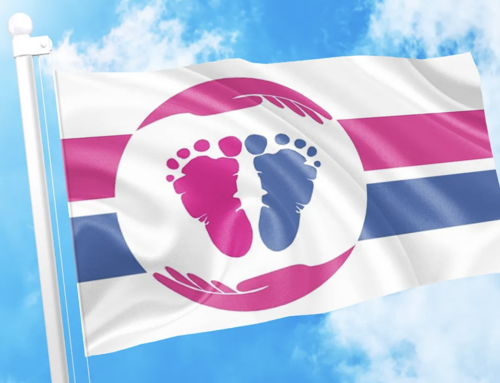Part II
Polls
A poll released at the beginning of March indicated that two-thirds of British Columbians thought the Premier was wrong to refuse public financing for abortions. He could no longer say (as he had done), that he spoke for the majority of the people in his province; he had to say that he spoke for “humanity” and in defence “of an already crumbling society.” A poll taken in May for the Vancouver Sun revealed that among committed voters in the Vancouver area 59 per cent supported the NDP and only 25 per cent Vander Zalm’s government. It became commonplace to say that he was sowing the seeds of his own defeat. Added to complaints about his allegedly erratic leadership came another issue in late April: he was accused of trying to help his close friend Peter Toigo, a self-made Catholic millionaire like himself, buy the Expo ’86 lands by getting around the orderly bidding process set up by Economic Development Minister Grace McCarthy.
Polls are one thing, elections another. The real test of Vander Zalm’s popularity came in a by-election in Boundary-Similkameen, in the province’s interior. For over twenty years it had been a Sacred stronghold; in the previous election, their majority had been 6,000. There was a complicating factor here, since this was a wine-growing region and its main industry was threatened by the free-trade agreement, which the premier supports. At any rate, the premier campaigned intensively, and his intervention did nothing to help his party’s candidate Russ Fox. He went down to a resounding defeat. Such a slap in the face made it seem that, even if Vander Zalm survived in provincial leader for one term in office, his chance of re-election was very slim.
Criticism
Some of the criticism of the premier is well deserved. There are questions about his administrative abilities and his policies. For example, his decision to privatize highway maintenance departments in the province seems silly. It brought a storm of protest. His remarks are often incautious, and in the cut and thrust of debate he does not always handle himself well. At a raucous town hall meeting in Prince George, for example, he told one young man from Holland who criticized the government’s funding of health care to “go back to Holland if you like it so much and don’t like it here” – hardly a conciliatory or an intelligent reply.
Yet, as the editorials and cartoons show, the attacks on him have often been excessively vicious. As we have seen too, many of them make little sense; they are based on reasons like the following:
– that morality has nothing to do with sex education (Dr. McLean).
– That it would be wrong for the premier to impose his Catholic views on a pluralistic society, but not wrong to impose United Church views (Rev. Robert Smith).
– That for a premier to attempt to lower the number of abortions in his province is an abuse of his authority (Toronto Star).
– That when a man in political office tries to act in accordance with his religious convictions “Canadians of every belief cringe” (The Star again).
Beliefs
Part of Vander Zalm’s trouble comes from his attempt to put beliefs in action. According to the media, what is required of every politician in our society, is that he distance himself from Church teaching and authority by some ritual gesture, some statement beginning, “I am a Catholic, but…” John Turner is a Catholic, but he was the first to rise in the House of Commons following the Morgentaler decision to beg the government not to invoke the “notwithstanding” clause – which would have permitted the abortion legislation to remain in force for a period of up to five years. Vander Zalm has made no such abject gesture. He is a Catholic without qualification – a disgraceful thing to be these days, apparently.
Pluralism
From Plato on, one stream of thought has considered that the man fittest for the task of government was the one most advanced in knowledge of the good. When people invoke the “pluralistic society” concept, they are usually demanding that a politician set aside his own education and his own experiences, which have led him to hold certain convictions, and become a nothing – a blank sheet for the opinion polls to write on. Vander Zalm is not a nothing but a something, and so he is feared.
His lengthy speech in the provincial legislature on the last day of February was a straightforward explanation of the pro-life position; yet it brought the headline, “Speech disgusting, NDP says.” He made extensive reference to statements made by Joy Klinger, a nurse who used to work in the operating room of a large hospital in which during one year abortions exceeded the number of live births. There was little that was extraordinary about the experiences she described: she had never seen an abortion performed because the mother’s life was in danger, the abortions she saw were for reasons of convenience, abortion committee procedures were farcical, and so on. She did refer to one case in which an aborted fetus cried. That plus Vander Zalm’s references to fetuses being cut up, led NDP members to call his statement “extremist,” “personally offensive,” “distasteful,” and “inappropriate for the legislature.” As the premier himself later said, “Whenever I attempt to explain the process graphically, people don’t want to hear that…” People are offended, not by a horrifying procedure which takes place, but by descriptions of it. Abortion is not in bad taste; protests against it are.
Health Act
Did Vander Zalm’s position on payment for abortion actually contravene the Canada Health Act, which says that health services must be accessible to all Canadians? Judge McEachern ruled that it did: “I can and do take judicial notice of the fact that if there is to be a lawful abortion, such a procedure required medical services.” But before this David Vienneau of the Toronto Star had asked several experts whether the premier could lawfully avoid paying for all abortions and got a variety of answers from them.
A former president of the Canadian Medical Association said simply, “if abortion is legal, it should be funded and if it is illegal, it shouldn’t be funded. “He shouldn’t impose his own moral judgment on it.” Sandra Rodgers of the University of Ottawa was equally emphatic: Canadians have always considered abortion a medical service, she said, and the federal government should not provide funding for a provincial health-care scheme unless it provides a broad range of health-care services.
But Bernard Dickens of the University of Toronto law faculty was not so sure. If an abortion is being sought “more for social than medical reasons,” the provinces may not be obliged to pay for them. “The difficulty,” he said, “is how do you define health and health-care services?” Margaret Somerville of McGill thought that Vander Zalm might not have contravened the health act at all. She said that abortions might not be a health service if they were performed for non-medical reasons; they could be considered the equivalent of cosmetic surgery:
“There are now two classes of abortion. The first is abortion that is necessary to save the life or health care and the province has an obligation to pay.
“The second would be abortions for reasons of convenience. That is, a woman doesn’t want a baby or a baby of that particular sex. This would be for non-health reasons. Therefore, there is no obligation for the province to pay.”
In the speech he gave in the B.C. legislature, as we have seen, Vander Zalm quoted a statement by a nurse, Joy Klinger, who would have put all the abortions she saw in the second category:
“…The truth is that these abortions were performed for reasons of inconvenience and social embarrassment to the other, or because either the father or mother of the fetus did not want the responsibility of the child…
“In my experience, I never saw an abortion performed where the terrible decision had to be made between a mother’s life or that of the baby…The abortions I saw were to accommodate the mother’s wishes, not because of critical life-threatening circumstances.”
Undoubtedly a large number of Canadians consider abortion to be a medical question; should they continue to do so? Joy Klinger’s testimony supports that of a host of experts in the Borowski trial in Regina that there is no such thing as a therapeutic abortion and virtually no such thing as an abortion for health reasons. Physicians for Life has recently reaffirmed this; they say that medical indications for termination of a pregnancy simply do no exist in 1988. Vander Zalm may be well ahead of most other provincial premiers in recognizing this fact. Sandra Rogers was.
Still, abuse of him continues – heightened at the beginning of July by the resignations of two prominent cabinet ministers, Brian Smith and Grace McCarthy. There was a flood of scathing editorials with titles like “Twilight Zalm,” “Malice in Vander-land,” and “Full speed astray,” “William Vander Zalm has the aura of a True Believer,” said one editorial. “and it is not surprising that some of his colleagues have had enough.” Linked to the familiar accusations of irrationality and credulity, however, was the completely wild one that he had consulted a numerologist.
To conclude, premier Vander Zalm has had a great deal to learn about the office he holds, and he has very likely made serious mistakes. Yet the newspaper cartoons depicting him have been far more vicious than they ought to be – at least partly because of his stance on abortion. Yet he has stood firm when other politicians have behaved like jelly fish; he has made people wonder whether there is such a thing as an abortion for health reasons; and he has helped save one baby. A North Vancouver woman wants him to be the godfather of her newborn son, since he gave her the courage not to have an abortion. It is no small accomplishment for a politician; can many of them say that they have done as much?



